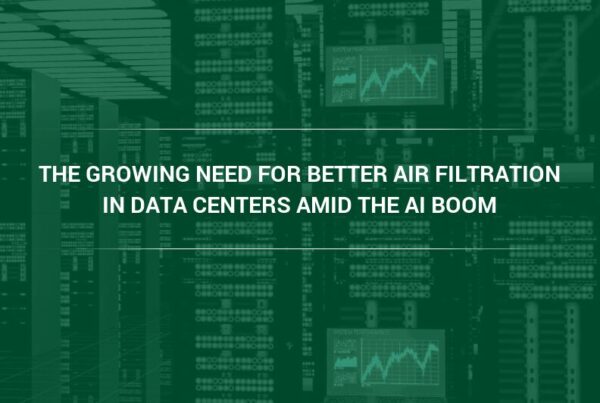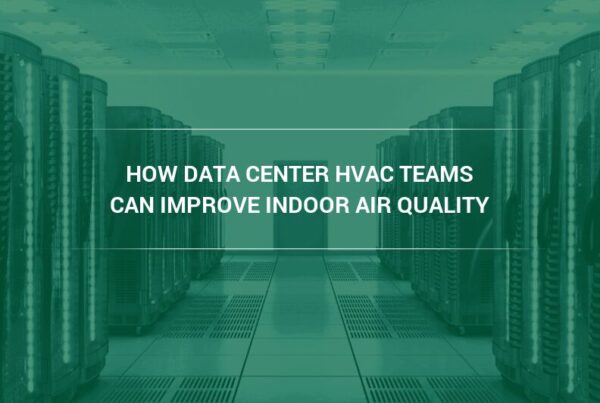Cyber-attack prevention is obviously a huge part of maintaining data center security. But online ambushes aren’t the only dangers data center operators must worry about. Physical threats like heat, humidity and airborne contaminants cause hardware to malfunction and lead to costly downtime.
Depending on the size of the enterprise, data centers can be small enough to fit in a server room, while others fill a floor of a building. The largest data centers are groups of buildings that occupy millions of square feet.
As of January 2022, there were 2,751 large data centers in the United States, and Loudoun County, Virginia, houses the world’s largest concentration of facilities, with more than 25 million square feet currently in operation and millions more in development. That’s followed by 484 data centers located in Germany, 458 in the UK, 447 in China and 324 in Canada.
Results from a recent survey note that 69% of data center owners and operators reported experiencing some form of downtime in the past three years, with half of those incidents causing substantial financial, operational and reputational damage. In addition, 62% of the downtime incidents classified as significant, serious or severe, costing more than $100,000, while 15% of these events cost over $1 million.
Impact of Dirty Outdoor and Indoor Air
Data centers are mostly located in industrialized countries afflicted with outdoor pollution thanks to sources like motor vehicles, manufacturing and industrial processing. This outdoor air pollution affects the indoor air quality of the data center environment because ventilation systems circulate airborne particles from outdoors into the facility.
Large data centers themselves are often a source of air pollution because they require enormous amounts of energy to operate 24 hours a day. The 12 largest data centers in the world occupy millions of square feet of space and consume as much power as a mid-sized town.
In addition, powerful HVAC systems constantly cool, clean and move the air to reduce the heat generated by the electronic equipment, maintain safe humidity levels and filter airborne contaminants. Ventilation systems for large data centers replace the air in the facility 30 to 50 times per hour. That’s significantly more often than the typical air change in an office facility, which is between two and six times per hour.
Diesel Burning Pollutes the Air
Another way that data centers contribute to air pollution is through diesel-burning emergency generators. These are used to keep them running when the primary power goes out. In fact, some states track the impact from this diesel exhaust and issue air quality permits to these technology facilities to limit air pollution levels from diesel-powered backup generators. A data center must prepare a health impact assessment of its toxic air pollution from diesel exhaust particles and accompanying nitrogen dioxide.
It is common for a new data center campus to install 50 to 100 emergency generators, while existing facilities may need to add more generators as they expand. The Northern Regional Office of the Virginia Department of Environmental Quality specifically addresses emergency generators in its data center air permitting process. For example, due to the potential for increased emissions, facilities must use the Best Available Control Technology (BACT) to control emissions from new equipment, which usually requires the operator to complete an emissions analysis prior to permitting. They need to ascertain if a generator’s engine would require alterations to meet the 6.0 g/bhp-hr (grams per brake horsepower-hour) BACT emissions limit.
Overheated Servers
Another cause of poor air quality inside data centers is overheated servers that emit gaseous contaminants and particulates. These contaminants can contain chemicals that damage servers, circuit boards and cooling systems and can lead to crippling malfunctions and downtime.
Contaminants emitted include:
- Sulfur
- Hydrogen sulfide
- Chlorine salt
“Because ventilation systems draw in and circulate contaminated air throughout data centers, it’s important to employ effective air filtration to prevent damage to the sensitive electronic equipment,” explains Adam Wiggins, Data Center Segment Manager at Camfil USA. “These dust particles can also damage HVAC components, which can lead to failure of the cooling system and cause dangerous overheating.”
Clearing the Air Inside Data Centers
No matter the size of the data center, precise air filtration is necessary to remove airborne contaminants to prevent them from settling in equipment. Critical electronic components are all at risk if operators do not enforce a rigorous airborne contamination policy. These include:
- Servers
- Drives
- CPUs (central processing unit)
- GPUs (graphics processing unit)
- Uninterruptible power supply systems
Using the correct air filters helps to ensure the HVAC system is working at the highest level, which in turn reduces energy costs. Accurate air filtration cleans the air inside data centers and pressurizes the air to block external pollutants from entering the facility.
Using low-quality air filters in a data center ventilation system or neglecting to maintain air filters can cause up to a 30% drop in efficiency over the entire system. This is because the system can’t effectively push air through the poorly made, overused or clogged filters. When the filters are compromised, the system uses more power and takes more time to reach the same result as a system using high-quality, properly maintained filters.
“In order to operate 24/7, all components and equipment in the data center must work in concert without interruption. If there is a disruption anywhere along the chain, the entire system is at risk of shutting down. A proactive approach to keeping a data center operational is to prevent the effects of poor indoor air quality by using the appropriate air filters in the ventilation system,” Wiggins explains.
Camfil Air Filter Solutions for Data Centers
Installing Camfil’s 5-star air filters in existing air ventilation systems can reduce energy expenditure by up to 40% by improving airflow through the system. These filters are rated as 5-star filters through the Energy Cost Index (ECI) program. Based upon a five-star scale, the Energy Cost Index is an indicator of what a filter will cost over its lifetime. The best rating—five stars—indicates that the filter is the most energy-efficient, longest-lasting filter available.
To achieve high filtration efficiency to protect delicate electronic equipment at data centers, start with high quality prefilters such as the Camfil 30/30 Dual 9 pleated panel air filters that are effective at removing larger airborne contaminants.. Then pair them with Durafil ES filters that enable the air handling system to remove submicron sized particles. The Durafil ES filter is available with MERV ratings from 11 to 16 for the potential to filter out particles down to .3 microns in size.
Camfil’s Hi-Flo ES filter is also ideal for data center applications because it provides a balance of filtration and energy efficiency without the need for a prefilter. The Hi-Flo ES filter removes large and submicron-sized particles from the air while enabling lower energy consumption than a typical prefilter/filter configuration.
“Camfil filters maintain their efficiency over time because they last longer and provide the lowest total cost of ownership in the industry,” Wiggins notes. “They significantly reduce energy costs, and our data center customers have reported yearly energy savings in the six-figure range.”
To learn more about these air filters, visit Camfil’s data center information page.



